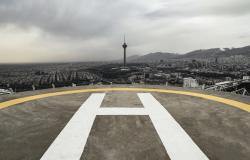Red Lines Crossed: Iran, Israel, and the Global Consequences of Regional War

Elkhan Nuriyev outlines three potential scenarios for the unfolding conflict.
The Middle East has once again been plunged into the flames of open conflict. Following Israeli airstrikes on Iranian infrastructure—including energy facilities in Tehran — Iran launched a barrage of missiles targeting Israeli cities, signaling a dangerous new phase of escalation. The strikes on Haifa and Tel Aviv mark a turning point: no longer a shadow war, the Iran-Israel confrontation has now burst into full view, with unpredictable regional and global repercussions.
What’s unfolding is not merely a clash between two long-time adversaries. It is a geopolitical flashpoint drawing in major powers, shaking global energy markets, and testing the limits of regional deterrence architectures. The war is no longer hypothetical. The question now is how far it spreads — and what strategic choices lie ahead for actors both inside and outside the region.
A War Long in the Making
The Iran-Israel conflict has simmered for decades through assassinations, cyberattacks, and proxy wars in Syria, Lebanon, and Yemen. Yet both sides had, until now, largely avoided direct strikes on each other’s homeland. That restraint has evaporated. The rules of engagement have changed.
Israel’s bombing of critical Iranian infrastructure — especially in densely populated urban areas — crossed a threshold Tehran could not ignore. Iran’s retaliation with direct missile fire into Israel signals its readiness to absorb significant risk in pursuit of deterrence and legitimacy. The strikes were calibrated but politically potent: a message to domestic audiences, regional allies, and global powers.
Strategic Fallout
This escalation threatens to unmoor an already fragile region. Key U.S. partners in the Gulf now fear being dragged into a wider conflagration, while global markets are already reacting to potential disruption in oil flows through the Strait of Hormuz. An expanded war could destabilize Iraq, Syria, and Lebanon — where pro-Iranian militias are embedded — and potentially provoke action from Hezbollah or even the Houthis.
The military and diplomatic responses of global powers will shape what comes next.
Russia, still locked in confrontation with the West over Ukraine, has sought to balance its relationships with both Tehran and Jerusalem. But this balancing act is now under pressure. Moscow may use the crisis to reassert its influence as a mediator — but could just as easily exploit it to deepen U.S. distraction and division in the Middle East.
China, for its part, has tried to position itself as a stabilizing force through economic diplomacy and limited mediation, as seen in the Saudi-Iran normalization last year. Yet Beijing now risks being seen as absent at a moment of crisis, particularly as its economic ties to Iran expand and its energy security becomes more exposed.
Meanwhile, a United States led by President Donald Trump, returning to a more muscular stance in the region, faces a dilemma. Escalation may force Washington into deeper military engagement just as it seeks to pivot toward the Indo-Pacific. Trump’s call with Russian President Vladimir Putin — confirmed by both sides — suggests potential great-power dialogue amid chaos, but whether this yields coordination or confrontation remains to be seen.
Three Dangerous Paths
1. Regional War: Iran activates its regional proxy network, sparking Hezbollah attacks on northern Israel and Houthi strikes on Gulf targets. Israel responds with overwhelming force. A full-scale regional war draws in the United States, risks direct Saudi-Iranian confrontation, and shatters already tenuous regional alliances.
2. Controlled Escalation: Both sides continue tit-for-tat strikes but avoid hitting strategic command or nuclear facilities. Oman and Qatar intensify back-channel mediation. The U.S. and Russia work to prevent further escalation, but the status quo remains volatile and costly.
3. Ceasefire and Strategic Pause: Under heavy international pressure, including from China and the EU, both sides agree to a temporary cessation of hostilities. This would not be peace —but rather a reprieve to recalculate. Whether diplomacy follows or deterrence collapses again depends on the choices made by global powers in the days ahead.
A Broader Crisis of Deterrence
The Iran-Israel conflict is no longer a local affair. It reveals the erosion of traditional deterrence, the fragility of regional alliances, and the failure of international crisis management mechanisms. If left unchecked, it could redraw the geopolitical map of the Middle East — and not on terms favorable to global stability.
The challenge now is not simply to stop the fighting. It is to prevent this moment from cascading into a wider breakdown of order. As missiles fall and red lines blur, the world must decide: will it manage the fires of war — or watch them consume the region?
Elkhan Nuriyev is a Senior Fellow with the Alexander von Humboldt Foundation in Berlin. He previously served as a Fulbright Scholar at the George Washington University and held senior research positions at the Middlebury Institute of International Studies at Monterey, the Kennan Institute at the Woodrow Wilson Center, the German Council on Foreign Relations, the German Institute for International and Security Affairs, and the George C. Marshall European Center for Security Studies. He is a Global Energy Associate at the Brussels Energy Club and a Senior Expert on Russia, Eastern Europe, and Central Asia at LM Political Risk and Strategy Advisory in Vienna.
Photo by Kamran Gholami


